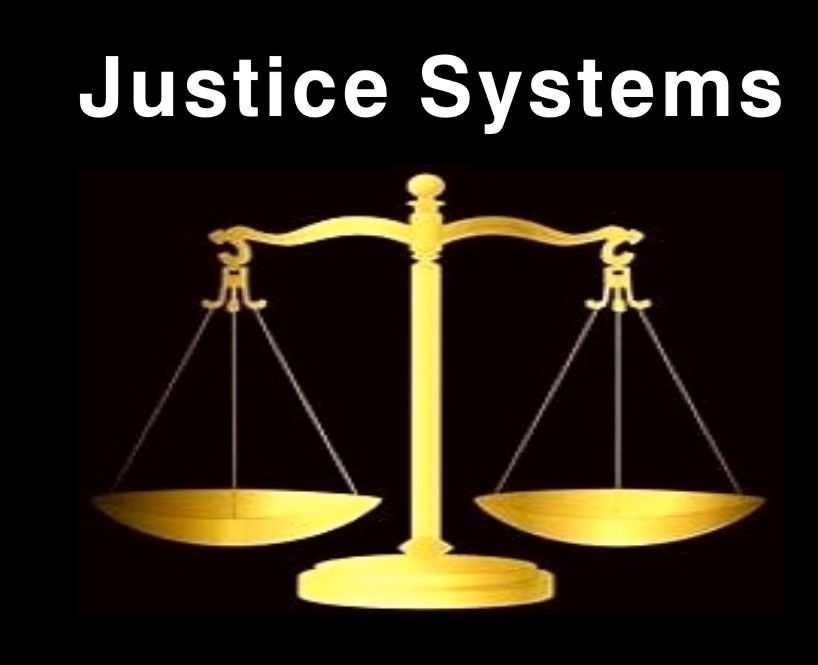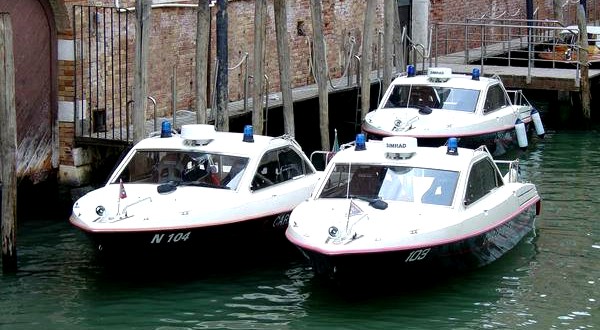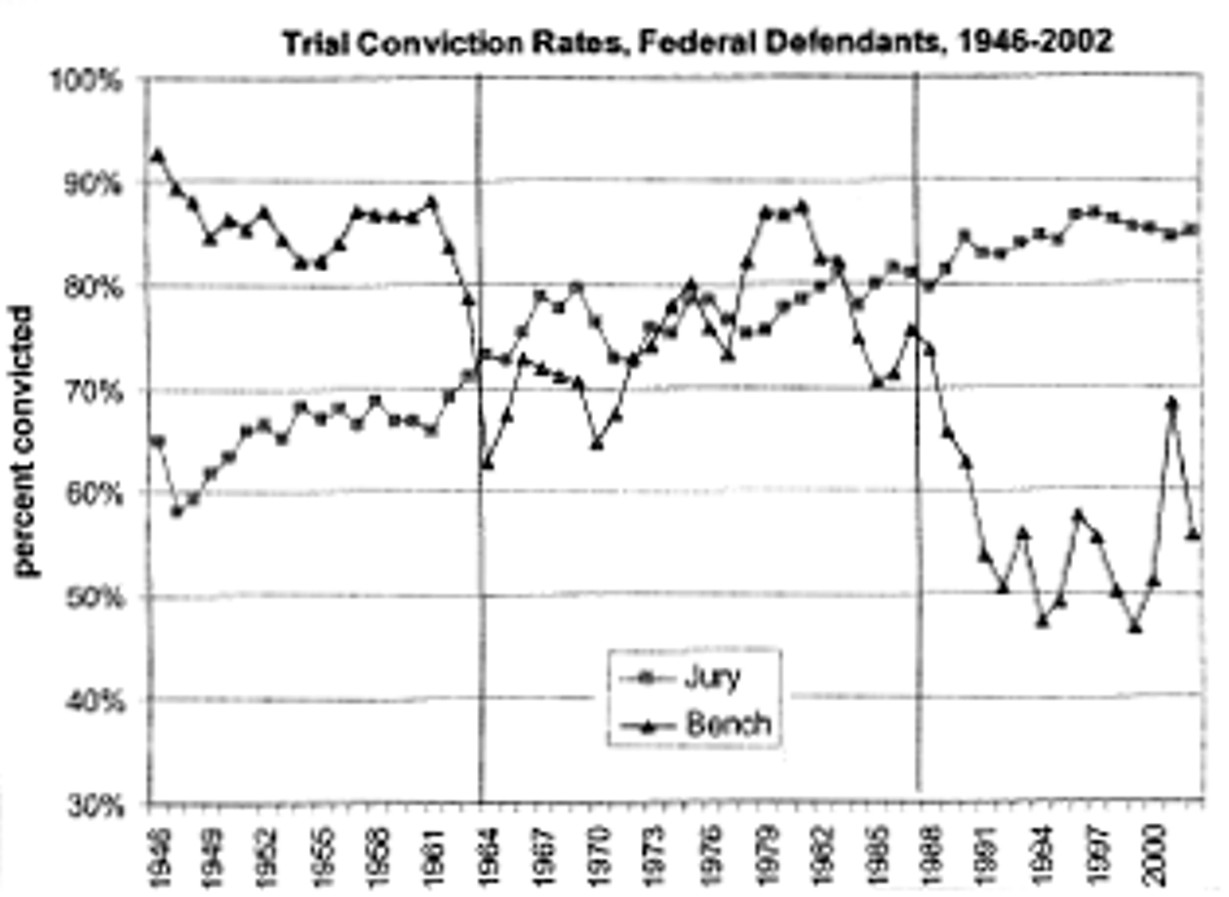
Category: Police and CSI
Another Effective Innovation By New York Police Is Being Duplicated By Others
Posted by Peter Quennell
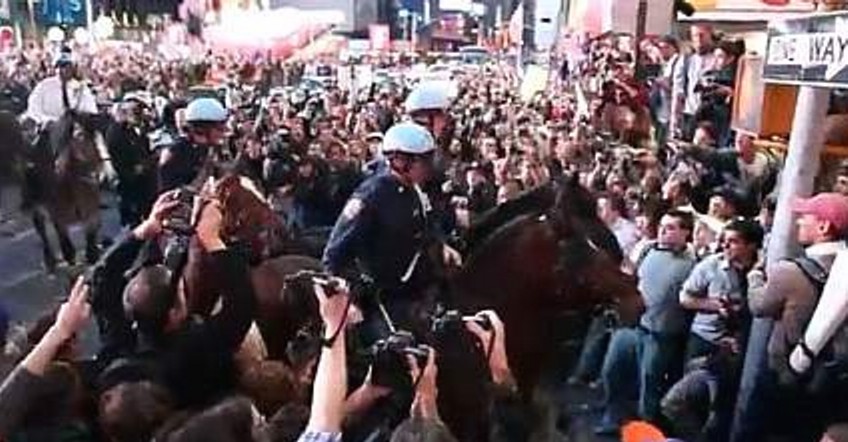
Police horses, up to a dozen stroked and photographed each evening in the Times Square area
In national US news any innovation of the New York police gets a lot of coverage.
Those crowd-calming police horses seen nightly in the Times Square area go way back, and their presence was never reduced back when some other cities did so - often to their later regret.
There is endemic pressure (especially after 9/11) to keep the city as safe as possible.
From that sustained effort at systems improvement, other American police forces, some very besieged at the moment, attempt to learn something.
New York police both themselves innovate and also adopt good ideas from elsewhere - not least from the brave, popular and effective police forces of Italy.
We posted in January 2013 on New York’s adoption of an Italian approach to policing.
One approach which seems a natural for Italy with all of its art is proving successful in New York now.
Described in the NY Times today is this ongoing exercise in staring at artworks. The point being to sharpen the perceptions of investigators, and to put them all on the same page objectively.
To teach people how to notice details they might otherwise miss, Amy E. Herman, an expert in visual perception, likes to take them to museums and get them to look at the art. Recently she escorted a group of New York City police officers to the Metropolitan Museum of Art and asked them to describe some of the things they saw.
They did their best. “This seems to be a painting of some males with horses,” one officer said of Rosa Bonheur’s mid-19th-century work “The Horse Fair,” a scene of semi-chaos as horses are driven to market. He tried to abide by Ms. Herman’s admonishment to avoid words like “obviously.” “It appears to be daytime, and the horses appear to be traveling from left to right.”
Another pair of officers tackled Picasso’s 1905 “At the Lapin Agile,” which depicts a wilted-looking couple sitting at a French bar after what might have been a long night out. “They appear to have had an altercation,” one observed. The other said, “The male and female look like they’re together, but the male looks like he’ll be sleeping on the couch.”
The officers asked that their names not be used because they were not authorized to speak to reporters. They said that they did not know much about art “” their jobs allow little opportunity for recreational museumgoing “” and Ms. Herman said she preferred it that way.
“I’ve had people say, “˜I hate art,’ and I say, “˜That’s not relevant,’” she said. “This is not a class about Pollock versus Picasso. I’m not teaching you about art today; I’m using art as a new set of data, to help you clear the slate and use the skills you use on the job. My goal when you walk out the door is that you’re thinking differently about the job.”
A painting has many functions. It’s a cultural artifact, an aesthetic object, an insight into a time and a place, a piece of commerce. To Ms. Herman, it’s also an invaluable repository of visual detail that can help shed light on, say, how to approach a murder scene. “It’s extremely evocative and perfect for critical inquiry,” she said in an interview. “What am I seeing here? How do I attach a narrative to it?”
One of the processes:
Before unleashing the officers in the galleries, she talked to them in a classroom in the Met’s basement. She put up a slide of “Mrs. John Winthrop,” a 1773 portrait by John Singleton Copley. The painting, showing a woman sitting at a table holding little pieces of fruit, is considered a masterpiece of fine detail “” the intricacy of the lace trim on the lady’s gown, the rich decorations on her hat. But there’s a detail that’s so obvious, or maybe so seemingly irrelevant, that most people fail to mention it in their description.
“Everyone sees that this is a woman with fruit, and 80 percent miss the mahogany table,” she said. (They also miss the woman’s reflection in the veneer.)
Ms. Herman also displayed a pair of slides featuring reclining nudes: Goya’s “The Nude Maja” (1797-1800) and Lucian Freud’s 1995 “Benefits Supervisor Sleeping,” who is very fat. Ms. Herman asked the group to compare the pictures. “Most cops, when I ask this question, say it shows someone before and after marriage,” she said.
Several officers raised their hands.
“Uh, the woman at the bottom is more generously proportioned,” one said.
“She is morbidly obese,” said another.
“Right!” Ms. Herman said. “Don’t make poor word choices. Think about every word in your communication.”
Ms. Herman, who has a new book out, “Visual Intelligence: Sharpen Your Perception, Change Your Life,” came to her vocation in a roundabout way. She worked first as a lawyer, did not like it, took a job in the development office at the Brooklyn Museum and then moved to the Frick Collection. Earning a master’s degree in art history at night at Hunter College, she eventually became head of the Frick’s education department.
There, inspired by a program in which Yale medical students studied works of art to better observe their patients, she helped devise a similar program for the Frick. Eventually she moved beyond medicine. She has been offering the courses full time as her own business since 2011; her clients include federal and local law enforcement agencies across the country, as well as medical students and business executives.
Also successful elsewhere:
Steve Dye, chief of police at the Grand Prairie Police Department in Texas, brought in Ms. Herman recently to talk to a group of officers from the region. He said her presentation was invaluable in showing the officers how to better observe and document their findings accurately and free from bias.
“Some of the works of art she showed us, we wouldn’t notice the finer details,” he said. “And we’re supposed to be professional observers.”
When forced to deconstruct paintings in group settings, people from different professions tend to respond differently.
For cops it’s a natural.
“The law enforcement community is much more forthcoming,” Ms. Herman said. “Cops will outtalk you every time. Doctors and medical students are much more inhibited. They don’t want to be wrong, and they never want to show that they are ignorant about anything.”
The New York Police Department is one of Ms. Herman’s most important clients. She tailors her presentations to her audiences, and they are on the regular training curriculum at the detective bureau and the training bureau at the Police Academy; other divisions use her services from time to time. In general, her program is voluntary rather than mandatory.
“Amy reminds officers to explore outside the box,” said Police Officer Heather Totoro, who added that the program helped officers in training because of its “uniqueness and power.”
“She taps into officers’ unique sixth sense, teaching them to tell her what they see, not what they think.”
Law enforcement officials tend to view the works through the lens of the job: Who has done what to whom? Where is the perp?
“Sometimes they’ll say, “˜We have an E.D.P. here’ “” an emotionally disturbed person,” Ms. Herman said. Once she showed some officers El Greco’s “The Purification of the Temple,” which depicts Jesus expelling the traders and money-changers amid turmoil and mayhem.
“One cop said, “˜I’d collar the guy in pink’” “” that would be Jesus “” “˜“because it’s clear that he’s causing all the trouble.’”
Among the works she finds most interesting as a learning tool is Vermeer’s exquisitely ambiguous “Mistress and Maid,” a 1666-7 portrait of a lady seated at a table, handing over (or being handed) a mysterious piece of paper. “There are so many different narratives,” she said. “The analysts come away asking more questions than answers “” “˜Who’s asking the question? Who’s doing the talking? Who’s listening?’ The cops will say, “˜It’s a servant asking for the day off.’”
She also likes “House of Fire,” a 1981 painting by James Rosenquist that has three absurdist parts: an upside-down bag of groceries, a bucket under a window shade, and a group of aggressively thrusting lipsticks. “It’s really conducive to good dialogue,” she said. “How many times do officers have to make order out of chaos? So many times in our work we come across things that don’t have a coherent narrative.”
The officers in the class seemed impressed, both by Ms. Herman and by their grand surroundings.
One officer said that she had learned “how to sit down with colleagues and deal with the fact that you can perceive things so differently from each other.” It was her first trip to the Met, or indeed to any art museum.
“I didn’t know what to expect,” she said. “It’s very Thomas Crown-ish, isn’t it?”
Below: the Vermeer painting referred to, in the Frick Museum in New York
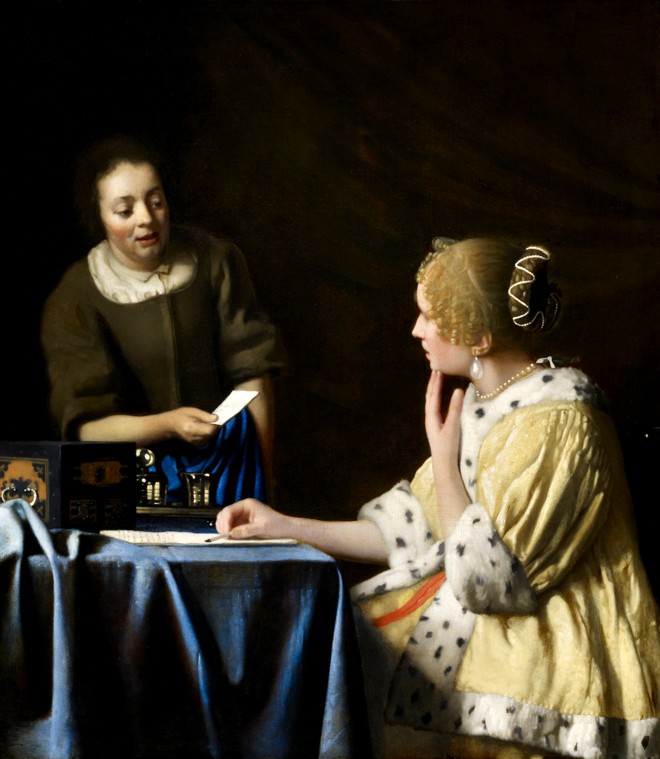
Italy’s Unpopular Politicians And Mafia Fellow Travelers Versus Its Popular Law Enforcement
Posted by Our Main Posters

[Above and below: several of over 100 car bombings Italian police and prosecutors were killed in]
1. On The Pro-Justice Side…
This puts the faux Nencini “end-of-civilization-as-we-know” crisis into some sensible context.
The Italian system doesn’t exactly come out badly compared to say that of the US. Surprise, surprise: See here who agrees.
Comparatively speaking, Italy has a much lower crime rate than the US, a much lower murder rate, a highly professional un-elected police hierarchy, a much smaller court system, and a miniscule number of prison cells.
The mafias are now mostly backed into small pockets..
For reasons to do with Italian history pre-WW II the system keeps politicians very much at arms length.
Almost every other justice system in the world comes under the Prime Minister’s or equivalent’s control, and it his or her party that appoints the judges. The Italian system comes under the separately-elected and non-partisan President of the Republic.
All judges and all prosecutors follow a career path laden with checks and balances, learning exercises and tests. (At this the highly-competent and impartial Dr Mignini excels and he will soon be the attorney-general of a region.)
The system is extremely pro-defendant - probably the most pro-defendant in the whole world. See this article and this article for proof.
The number of Italians who are in prison at any one time is proportionally only about 1/5 that of the United States. Take a look.
It is not like everyone in Italy is impatiently waiting for the fatuous posse of Preston, Heavey, Fischer & Moore to turn up and save them from themselves. There is no problem there.
Our Italian poster Machiavelli (Yummi) who reported for us on the Cassation and Nencini appeals has assembled these facts on what the Italian population actually thinks.
For comparison, in 2011 the percentage of Italians who declared they trust the justice system “a lot” or “enough” was 53.3%. By comparison, the percentage of Italians who declared they trust the government “a lot” or “enough” were 14.7%, and those who trust the parliament were only 15%.
In 2012, the percentage of Italians who trust the parliament is now only 9.5%, and those who trust the Mario Monti administration are only 21.1%.
Over the eight years from 2004 to 2012 the percentage of Italians who trust the justice system was always bigger than those who trust parliament or government by at least ten points, and in some years we can see a spread of 20, 30, even 39 percentage points achieved by the judiciary over the parliament and government.
However, some cases of corruption (such as our Hellmann-Zanetti case, but also several others indicated by the Rapporto Italia 2012) do hamper trust.
The most trusted institutions in Italy above all are the Carabinieri (74% of Italians trust them) and the Polizia di Stato (71%).
Which means the most trusted institutions are precisely those law enforcement instruments which are deployed to enforce the orders of prosecutors.
(My source is “Rapporto Italia 2012” by EURISPES).
More evidence of this popularity. And even more.
2. On the Anti-Justice Side
In the past decade both corrupt politicians and the mafias have been remorselessly rolled back.
The Perugia Prosecutor-General’s Office being close to Rome and notoriously hard to bend was given national jurisdiction over the corruption of the 2006 Winter Olympics and the 2010 rebuilding following a huge earthquake.
The Florence Prosecutor-General’s Office being close to Rome and notoriously hard to bend was given national jurisdiction over the corruption of the contracts for the high-speed rail links that pass through Florence and on.
But attempts of corrupt politicians and others to meddle in this case go on and on and on.
Knox and Sollecito may think it is for pure love of them. Think again. There are unsavory parties on the anti-justice bandwagon who if it suited them would disappear Knox and Sollecito in the blink of an eye.
Politics played a part in ex-MP Rocco Girlanda, a Berlusconi poodle, accessing Capanne Prison multiple times to slobber over Knox. As a member of the Justice Committee under former Berlusconi-party MP Giulia Borngiorno’s sway (hows THAT for a conflict of interest?) Girlanda (1) petitioned the President for Knox, (2) tried to cut the national police wiretap budget, (3) tried to get Perugia prosecutors investigated, (4) repeatedly appeared on TV and in other media to make false allegations, and (5) chaired several US/Italy “liberation” meetings.
Sollecito lawyer Giulia Bongiorno has been wearing her member-of-parliament hat to stir up the (essentially toothless) Ministry of Justice against Judge Nencini. And to try to get the Council of Magistrates to give her client a break (Good luck with that - they wont move.)
The mafia backseat drivers (known about in Italy but not reported in the US) are there in a minor but pervasive way. Their roles were summarised in several places including this post here.
It is odd, to say the least, to see such self promoting reformers of the Italian system as Preston, Heavey, Fischer and Moore happily carrying water for the mafias.
So What We May Expect
Judge Nencini is a seasoned mafia fighter, and he is also a seasoned fighter of politicians who are corrupt and try to bend the system their way. But his record is very clear. Attack him for murky end - and he does not exactly back down.
From the point of view of Sollecito’s prospects, this faux storm looks like another huge wrong move.
Involvement Of The Formidable Carabinieri Shows How Italian Justice Will Not Be Leaned Upon
Posted by Peter Quennell
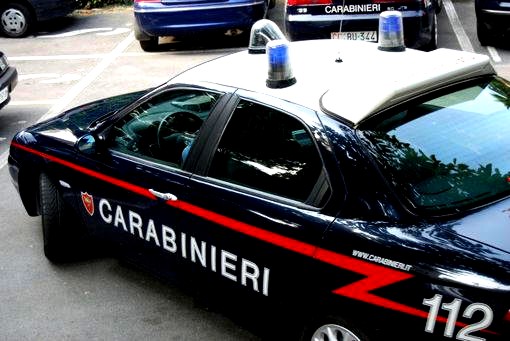
Judge Nencini may have invoked the help of the Carabinieri for reasons going beyond simply very good science.
Italy has among the world’s lowest crime-rates, murder-rates and incarceration-rates. Unusually low criminal and anti-social tendencies among native-born Italians, and strong family pride, explains a large part of this.
But another main reason is the high-profile and exceptionally smart police presence. Deliberately a cool presence rather than a hot and intimidating presence, and in fact a very popular one.
This has allowed for an extremely small court and prison system relative to the size of the population. These principles are now being adopted by of all places New York city.
At its apex is the very well-trained well-funded well-equipped national force, the Carabinieri, about which, in response to a claim that was stupid even by Sollecito’s standards, our main poster Yummi remarked:
The most trusted institutions in Italy above all are the Carabinieri (74% of Italians trust them) and the Polizia di Stato (71%).
Quite possibly the police force with the highest popularity rating in the world. In a recent email about the Carabinieri, Yummi also added the following:
The Carabinieri are a very peculiar police corps. They are indeed a police corps, yet also are formally military; in fact, they have military battalions (elsewhere) and under all points of view they are an extreme elite-corps. As militariy they don’t answer directly to the government but to the President; and from their facilities, you may infer they are a pretty well-trained police force.
They have the popular respect that the US’s FBI would probably like to have. (The two forces do co-operate very closely, and in fact they permanently exchange officers to work on their numerous common cases.)
The only relationship prior to these lab tests of the Carabinieri to Meredith’s case was that Raffaele Sollecito’s sister Vanessa once worked there.
She lost her job for some seriously foolish moves and her appeal to get back in to the Carabinieri was a failure.
So. The Carabinieri. Of possible real significance now in Meredith’s case?
The Carabinieri report directly to the President of the Republic. The President is also the ultimate head of the justice system, deliberately so as set out in the constitution to keep murky politics at bay. He also is wildely popular.
Judge Nencini may be signaling that he wants Italy’s most respected institutions on the side of his verdict. And no more murky politics.
Perugia Police Chief During 2008 Investigation Rises To Head Of National Anti-Mafia Department
Posted by Peter Quennell
[Video commentary and interview in Italian]
Arturo de Felice has served more than 30 years in various police jurisdictions. Now he becomes head of the anti-mafia department in Rome.
He was in charge at the Perugia questura up to August of 2008 when the crime was being jointly investigated with experts from Rome.
Arturo de Felice made the anouncement to the media and a nervous Perugia on the day after interrogators caused Knox’s and Sollecito’s alibis to separate. He announced to the media that Sollecito had admitted lying and Knox had admitted to being at the scene - with Patrick Lumumba, though, not with Guede.
He indicated that police were surprised at how quickly Knox crumbled, and this surprise was confirmed by interrogators themselves and an interpreter at the trial in 2009. From the 7 November Daily Telegraph.
The police said today that Knox’s confession could be the key to solving the case.
Mr De Felice said: “She crumbled. She confessed. There were holes in her alibi. Her mobile phone records were crucial.”
He said Knox’s claims that she was elsewhere had been demonstrated to be false. The police found text messages on her phone from Lumumba, fixing a meeting between them at 8.35pm on the night Miss Kercher died.
The police also said that Sollecito had cracked, and admitted he had lied. Tomorrow morning, all three will appear before a judge to have their arrests confirmed before they are formally charged with non-premeditated murder and participation in an act of sexual violence.
Of course, it was not an especially helpful crumbling by Amanda Knox. Lumumba was released after a lot of time and effort was wasted when a palm print at the scene was identified as that of Rudy Guede.
However in her two written confessions Knox was pretty nasty toward Patrick. Then she let him languish in prison for several weeks. And as Fly By Night posted on the PMF forum last year, Knox had admitted to crimes, if not to murder.
1. She provided the access for a murderer to enter the cottage.
2. She heard thuds and a scream, and imagined what was happening.
3. In her drunken stupor, she failed to come to Meredith’s aid both during and after the murder.
4. She actively covered up the murder by failing to report it or otherwise detail her actions for 4 full 24 hour days following the murder.
In December Knox was interviewed by Mr Mignini in the presence of her attorney and was asked her why she had implicated Patrick. She refused to answer.
At trial she raised no objections to any testimony from those present at the interrogation that she spontaneously fingered Patrick, and she admitted under interrogation that it was her idea.
Mr De Felice comes from Calabria in the deep south (where Dr Galati also comes from) and has headed many mafia investigations in his career. This is dangerous work and those who do it tend to be widely admired in Italy.
CIA v. State Department: A Significant Development For The Perugia Case?
Posted by Peter Quennell

As expected the Supreme Court of Cassation has upheld kidnapping convictions against 23 CIA operatives.
The landmark case dates to Feb. 17, 2003, when Hassan Mustafa Osama Nasr, a radical Egyptian cleric known as Abu Omar [image below}, walked out of his Milan apartment in broad daylight and vanished.
talian authorities used cellphone records made at the time and location of the abduction to determine that CIA officers snatched Abu Omar, drove him to nearby Aviano Air Base and flew him to Egypt. According to Italian court documents,
Abu Omar was beaten and subjected to electric shock in a Cairo prison. He was later freed.
The significant development for Meredith’s case is that the State Department had refused to organize diplomatic immunity with Italy for any of the 23.
Now at least one of them, Sabrina De Sousa (image at top with her lawyer), is suing the State Department for not having stood by her in retroactively organizing that diplomatic immunity.
All 23 could now be the subject of requests for extradition to Italy to serve out their six-year sentences, and if the US Justice Department refuses to comply they could be the subjects of worldwide arrest warrants via Interpol.
That could mean the end of their operational usefulness in the CIA and conceivably prevent any of them ever traveling outside the US again in their lifetimes.
Why have the CIA and the State Department seriously parted company here? Well, their mandates are almost polar opposites.
The State Department and its Embassies and the very considerable American presence throughout the United Nations tries hard to get along with friendly nations, and Italy is probably one of its top half-dozen friends.
The CIA on the other hand is charged with using fair means and foul to fight back against terrorism worldwide, and sometimes its practices contravene the best interests of diplomacy and the local law.
Here the CIA is coming out the clear loser and State is sweetly sitting on its hands and not upsetting Italy in any way.
Cables released so far by the State Department under the Freedom of Information Act suggest that State and the Rome Embassy really didnt ever lift a finger to subvert Italian justice on behalf of Amanda Knox.
Here’s betting more of the same - no action by State - as the Cassation appeal comes alive. And no standing in the way of an extradition request for Knox if Cassation decides Judge Masssei got the trial right.

The Casey Anthony And Sollecito/Knox Outcomes Spark A New Discussion Of The CSI Effect
Posted by Peter Quennell
That seems a good explanation of the so-called CSI effect in the Fox Kansas City video above.
Many crime shows such as the BBC mysteries and the Law & Order series and spinoffs show investigators solving their crimes in the old-fashioned way. Lots of witness interviews and alibi and database checking, and walking around and loose ends and lying awake at night puzzling. And often there’s a big stroke of luck.
But if you watch the very popular CSI Las Vegas series and its spinoffs in Miami and New York, and the various clones on other networks, you will see something very different indeed.
When those shows first began airing worldwide in the late nineties, the producers explained that audiences increasingly appreciate learning something new when watching a show, and it is true, one sure can load up on the trivia.
But you will also see the US equivalent of Dr Stefanoni and her forensic team in those shows, roaming far beyond the narrow crime scene, interrogating witnesses and checking alibis and finding a lot of non-forensic evidence, and even at times drawing guns.
Most unreal is that, time and again, the forensic evidence testing is clearcut and takes just a few minutes and instantly clinches the case.
- There are several articles like this one and this one on whether the Casey Anthony jury was affected by a shortfall in the starkness of the forensics when the behavioral evidence seemed so strong.
- There are several articles like this one and this one on whether the appeal verdict outcome in Perugia might be affected in the same way.
- There are many articles like this one and this one and this one and especially this one saying there is a tough added burden on investigators and juries without a commensurate improved outcome.
With conviction rates declining in the US and Europe, professionals are taking a scientific look at whether the CSI Effect is one big cause of that decline.
At the macro level in the US this writer doubted that the CSI Effect is fatally unbalancing takes on the wider evidence. The same conclusion was reached in this first major study at the micro level.
But the belief in the CSI Effect continues. Articles like this one on an Australian site talk of a backlash against too many acquittals. Some articles like this one argue that maybe lay juries are out of their depths.
The graph at bottom (which we’d like to see updated) showed how the US Feds are still winning juries over and maintaining amazingly high conviction rates. And at state level and lower, judges and lawyers are also taking countermeasures.
In Ohio and many other states prosecutors and judges are acting against a possible CSI Effect in their selection and briefing of juries. And an NPR report came up with these findings.
Some states now allow lawyers to strike potential jurors based on their TV habits. Judges are issuing instructions that warn juries about expecting too much scientific evidence based on what they see on TV.
In the field, Shelton says death investigators sometimes run useless tests, just to show they went the extra CSI mile.
“They will perform scientific tests and present evidence of that to the jury. Even if the results don’t show guilt or innocence either way, just to show the jury that they did it.”
This is coming at a time when death investigators in America have no resources to spare. An investigation by NPR, PBS Frontline and ProPublica shows some states have already opted not to do autopsies on suicides, others don’t autopsy people who die in traffic accidents, and many don’t autopsy people who die over the age of 60.
But Murphy, the Clark County coroner, expects things to get worse.
“You know, we’re in budget cuts right now. Everybody’s in budget cuts. Las Vegas is no different than anybody else. We’re hurting. We’re going to feel that same crunch as everybody else,” he says.
One of Zuiker’s great disappointments is that, for all its popularity, his fictional Las Vegas crime lab didn’t generate more political support to fund death investigation.
“I’ve done my job. You know, we’ve launched three shows that cater to 73.8 million people a week and is a global phenomenon and the largest television franchise in history. We hoped that the show would raise awareness and get more funding into crime labs so people felt safe in their communities. And we’re still hoping that the government will catch up.”
The jury is still out on what really swayed the Perugia appeal jury. Their sentencing report is due out in the New Year. They sure didnt look at very much except for a small fraction of the DNA.
Which leaves us with a big question. How did Judge Hellman brief his jury? Did he warn against the CSI Effect? We’re told this might be his first DNA case, so Cassation will surely look closely at that.
Impressive Public Push In Italy, Anti Crime, Pro Stronger Justice System
Posted by Peter Quennell
Four months ago now, Nicki presented us with this very enlightening picture of Italian justice.
Two of the important conclusions of Nicki’s piece relevant to the case in Perugia:
- The Italian system of justice is not only fair and cautious, it is painstakingly so, almost to the n’th degree.
- Prosecutors do not have an easy time of it, and they have to clear hurdle after hurdle to make their case.
The system may not be ripe for any great changes, but the Italian public certainly seems to be favoring law and order.
Now there’s been a huge anti-Mafia turnout in Naples. Click above for the BBC’s report.
“They Were Held For A Year Without Even Being Charged!!” How Italian Justice REALLY Works
Posted by Nicki

[Above: Cassazione, the Italian Supreme Court Of Appeals}
A misleading mantra
This frequently quoted claim above is maybe the most mindless and misinformed of all the mantras on the case.
Much of the US media and some of the UK media - sometimes enthusiastically, sometimes with reserve - has parroted the claim that Raffaele Sollecito and Amanda Knox were “held without charges” for nearly a year.
Perhaps bringing to mind the notion of two innocent bystanders to the crime being arbitrarily arrested? Locked up in cockroach-infested jails by abusive police? Led on by an evil prosecutor with endless powers up his sleeve, and nothing at all to slow him down? Lost and forgotten by any judges in the case?
Well, good luck with that one, if it’s designed to sway the process.
It irritates just about everybody here in Italy, the judiciary and the media included. And it is doing the defendants no good at all.
Negative stereotypes like these really should not be applied to a country that is one of the founding members of the EU, of NATO, and of the European Council, and of the G-7, G-8, OECD, and United Nations (the non-permanent member of the Security Council in 2007-2008).
So for media reporters and commentators, please let us get the facts straight. Once and for all?!
Origin of Italian jurisprudence
Italian jurisprudence developed from Roman Law. It was shaped in the course of history to become a modern and very fair system. Judicial powers are subjected to a very complex and extremely pervasive set of checks and balances, which really assure maximum protection of every citizen’s rights.
Comparing the US and UK common law system - a model founded on non-written laws and developed through judicial proceedings - with this system which arose from the Roman Law model - based on a written civil code - is really like comparing apples to oranges.
They were both conceived to protect individual’s rights at a maximum level, while seeking justice for the victims. But with entirely different processes.
One is not necessarily better or worse. But there are legal experts who think the Italian system is distinctly fairer - much more weighted toward the defendants. In the US and the UK the prosecutor usually has to make it through only one pre-trial hoop. In Italy the prosecutor has to make it through a whole row of pre-trial hoops.
Legal status of a witness and a suspect
Let’s see what happens in Italy to the legal status of a person who, while considered a “persona informata dei fatti” which means “a person who could yield useful information” in relation to a brutal murder, suddenly becomes a suspect in the eyes of the police.
If while interviewing the “person who could yield useful information” the suspicion arises that such person could have played an active role in the crime, their status then turns into that of a suspect. The police can then detain that suspect up to 48 hours.
Those 48 hours are the period within which a prosecutor - if he believes that the evidence of guilt is meaningful - can request a validation of the arrest by the Judge of Preliminary Investigation (the GIP).
If the judge agrees with the prosecutor that a serious indication of guilt exists, a warrant for the arrest is issued by the judge, and the person’s detention is thus validated.
Immediately, as soon as the status of “person who could yield useful information” status changes into the status of a suspect, the suspect person has a right to legal counsel. This legal counsel normally immediately appeals for the release of the suspect.
Subsequent hearings by different judges
Thus setting in motion what can be a LONG sequel of hearings - for which in US and UK common law there is no such equivalent. Each hearing is headed by a different judge. This judge examines prosecution and defence arguments, and decides if the suspect may be released on any of these bases:
- Seriousness of the clues presented by prosecution
- Likelihood of repeating a similar crime
- Likelihood of fleeing the country during the ongoing investigation
- Danger of tampering with, or fabricating evidence
If every one of the defence appeals fails, in front of a number of different judges, in a number of different hearings, and the investigation is officially closed, the suspect then goes on to a pre-trial hearing.
Once again here, yet another judge rules either to clear and release the suspect by rejecting the submitted evidence, or to send the suspect to trial on the basis of that evidence, thus making the charges official.
Judicial decisions on bail, house arrest, or jail
Now that the charges are official, the judge can decide if the defendant must await trial under house arrest, or in freedom, of if the defendant must remain in jail.
If the judge, based on their knowledge of the crime and the defendants, estimates that the chances of re-offending or fleeing the country are high, the suspect must remain in jail.
So nobody in Italy can be detained without a reasonable suspicion, a long series of judicial hearings (any one of which could set them free) or eventual official charges.
Amanda Knox and Raffaele Sollecito have not in fact been incarcerated for over one year due to zealous police or a bizarre prosecutor or the complicity of a number of judges throughout the process.
They have been incarcerated because an articulate and balanced process of law has officially and very fairly established there are strong indications that they willingly participated in the vicious murder of Meredith Kercher.
Failure of defenses to persuade judges
Their own lawyers have put up a tough fight for Raffaele Sollecito and Amanda Knox throughout the judicial process. But they have simply failed to convince the judges throughout that process.
One that actually seems strongly weighted in their favor.
